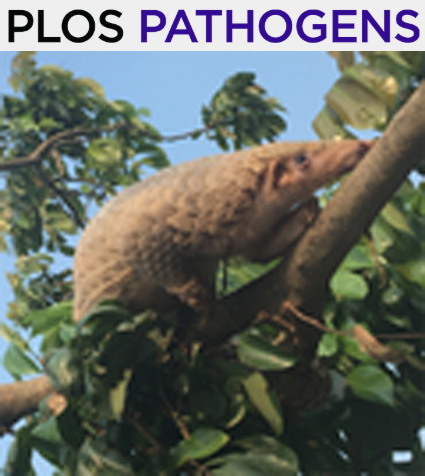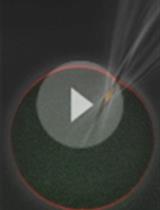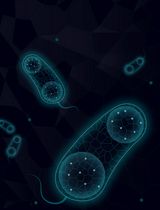- EN - English
- CN - 中文
Fluorescence-based Heme Quantitation in Toxoplasma Gondii
基于荧光的弓形虫血红素定量
发布: 2021年06月20日第11卷第12期 DOI: 10.21769/BioProtoc.4063 浏览次数: 3378
评审: Alexandros AlexandratosMarcelo S. da SilvaSneha Ray
Abstract
Toxoplasma gondii is a highly prevalent protozoan pathogen throughout the world. As a eukaryotic intracellular pathogen, Toxoplasma ingests nutrients from host cells to support its intracellular growth. The parasites also encode full or partial metabolic pathways for the biosynthesis of certain nutrients, such as heme. Heme is an essential nutrient in virtually all living organisms, acting as a co-factor for mitochondrial respiration complexes. Free heme is toxic to cells; therefore, it gets conjugated to proteins or other metabolites to form a “labile heme pool,” which is readily available for the biosynthesis of hemoproteins. Previous literature has shown that Toxoplasma gondii carries a fully functional de novo heme biosynthesis pathway and principally depends on this pathway for intracellular survival. Our recent findings also showed that the parasite’s intracellular replication is proportional to the total abundance of heme within the cells. Moreover, heme abundance is linked to mitochondrial oxygen consumption for ATP production in these parasites; thus, they may need to regulate their cellular heme levels for optimal infection when present in different environments. Therefore, quantitative measurement of heme abundance within Toxoplasma will help us to understand the roles of heme in subcellular activities such as mitochondrial respiration and other events related to energy metabolism.
Keywords: Toxoplasma gondii (弓形虫)Background
Heme, an organic molecule, plays a vital role in virtually all living organisms. For example, heme binds to hemoglobin and myoglobin for oxygen transport and serves as a co-factor for several enzymes within the electron transport chain for mitochondrial respiration (Ponka, 1999). Previous literature has shown that Toxoplasma has a fully functional de novo heme biosynthesis pathway (Bergmann et al., 2020). Genetic deletion of Toxoplasma heme biosynthetic enzymes results in decreased replication in vitro (Bergmann et al., 2020; Krishnan et al., 2020; Tjhin et al., 2020) and the loss of acute virulence in a murine model (Bergmann et al., 2020); therefore, inhibition of de novo heme production sheds light on the development of novel therapeutic strategies for managing Toxoplasma infections.
Generally, there are four methods for the measurement of heme abundance in cells: 1) Pyridine hemochrome-based heme quantitation (Sinclair et al., 2001). This strategy replaces the nitrogen ligands of protein-bound heme with pyridine under alkaline conditions. The resulting hemochrome is further reduced and oxidized before spectrophotometric quantitation; 2) Reversed-phase HPLC-based quantitation of heme and its intermediates (Sinclair et al., 2001). An acetone/HCl/water solution is used to extract heme and its biosynthetic intermediates from intact cells or cell homogenates, followed by separation on a C18 HPLC column. The standards of pure heme and its intermediates are run on the column before sample measurement to help recognize their peaks and quantitate their abundances; 3) Protoporphyrin IX (PPIX)-based fluorescence assay (Sinclair et al., 2001). PPIX is produced by the penultimate enzyme within the classic de novo heme biosynthesis pathway (Phillips, 2019). PPIX is further conjugated with a ferrous iron group to form a functional heme molecule. The non-conjugated PPIX molecule displays strong fluorescence, whereas heme is non-fluorescent; therefore, stripping ferrous ion from heme generates fluorescent PPIX, which can be quantitated by a fluorometer and represents heme abundance; 4) Biosensor-based heme quantitation by live-cell imaging or flow cytometry (Song et al., 2015; Hanna et al., 2016; Yuan et al., 2016). Genetically encoded hemoproteins, such as horseradish peroxidase (HRP)- or ascorbate peroxidase (APX)-based biosensors, can be expressed in different organelles to detect their labile heme content (Yuan et al., 2016). Additionally, the heme-binding proteins are genetically fused to heme-sensitive fluorescent proteins to quantitate labile heme within live cells by ratiometric fluorescence quantitation or fluorescence resonance energy transfer (FRET) (Song et al., 2015; Hanna et al., 2016).
The pyridine hemochrome-based strategy is not very sensitive and requires large amounts of parasites as initial material. The HPLC-derived quantitation requires expensive equipment and columns. Additionally, it only can quantitate one sample per run. The biosensor-based method demands the implementation of biosensors in target organisms. Overexpression of biosensors may disturb labile heme pools in the cells and further impair their health status. The PPIX-based fluorescence heme quantitation is economical and sensitive. Moreover, it can be performed in 96-well plate format as a semi high-throughput strategy for multiple samples simultaneously.
In the procedure for the PPIX-based heme quantitation assay, the heme-bound ferrous ion can be chemically removed by oxalic acid via boiling before measurement. During the assay, non-boiled parallel samples must be included to detect background fluorescence signals within parasite strains, which will be subtracted from the corresponding boiled samples. Here, we modify the previously published PPIX-based fluorescence heme quantitation assay (Sinclair et al., 2001). In this protocol, the parasites are mechanically liberated from host cells, filter-purified, and ruptured by sonication prior to heme quantitation. As an example, we measured and compared heme abundances in wildtype parasites and a heme-deficient transgenic Toxoplasma strain. This method employs a plate reader to quantitate heme in a 96-well plate format; it shows high sensitivity and only requires 5-10 × 107Toxoplasma parasites for measurement, which can be harvested from 1-2 T25 flasks. This strategy can be modified for measuring heme abundances in other apicomplexan parasites.
Materials and Reagents
Nucleopore track-etched hydrophilic membrane filter, 3.0-µm pore size (VWR, catalog number:28158-624) with filter holder (Fisher Scientific, catalog number: SX0002500)
15 ml polystyrene conical tubes (VWR, catalog number: 10026-084)
1.5 ml Eppendorf microcentrifuge tubes (VWR, catalog number: 89000-028)
Black 1.5 ml microcentrifuge tubes (VWR, catalog number: 47751-688)
10 ml syringes (VWR, catalog number: BD309646)
Blunt-end needles (McMaster-Carr, catalog numbers: 75165A761 [20G]; 76165A759 [25G])
Cellstar® black 96-well plates without lids (VWR, catalog number: 82050-732)
1,000 ml glass beaker (VWR, catalog number: 10754-960)
5 ml and 10 ml serological pipettes (VWR, catalog numbers: 89130-896, 89130-898)
20 µl, 200 µl, and 1,000 µl micropipette tips (VWR, catalog numbers: 76322-134, 76322-150, 76322-138)
Toxoplasma gondii RH∆ku80∆hxg strain lacking the ku80 and hypoxanthine-xanthine-guanine phosphoribosyl transferase genes. This strain is provided by the Carruthers lab at the University of Michigan Medical School. Lack of the ku80 gene boosts homology-dependent recombination in the parasites (Huynh and Carruthers, 2009). Loss of hypoxanthine-xanthine-guanine phosphoribosyl transferase (HXG) allows this strain to be genetically modified by exogenous DNA vectors carrying the HXG gene. This strain is widely used in the Toxoplasma research field as a wildtype parental strain.
RH∆ku80∆hxg∆cpox strain (abbreviated to ∆cpox). A heme-deficient parasite strain was generated in a previous study (Bergmann et al., 2020). This strain lacks coproporphyrinogen-III oxidase (TgCPOX) that catalyzes the antepenultimate reaction within the parasite’s heme biosynthesis pathway.
RH∆ku80∆hxg∆cpoxCPOX strain (abbreviated to ∆cpoxCPOX). A TgCPOX complementation strain was generated in a previous study (Bergmann et al., 2020). Heme deficit is restored in this strain.
Human Foreskin Fibroblasts (HFFs) (American Type Culture Collection (ATCC), catalog number: SCRC-1041)
Corning® Dulbecco’s Modified Eagle Medium (DMEM) (VWR, catalog number: 45000-304)
100× Penicillin-Streptomycin (VWR, catalog number: 45000-652)
200 mM L-glutamine (VWR, catalog number: 45000-676)
1 M HEPES Free Acid (VWR, catalog number: 45000-696)
Hyclone® Cosmic Calf Serum (Cytiva, catalog number: SH30087.03)
HyClone® Dulbecco’s Phosphate-Buffered Saline (DPBS) powder, without calcium and magnesium (Powder) (Cytiva, catalog number: SH30013.04)
Pig hemin powder (VWR, catalog number: BT138155-1G)
Oxalic acid dihydrate (VWR, catalog number: 97064-978)
Isopropanol (VWR, catalog number: BDH11744)
DPBS (see Recipes)
D10 medium (see Recipes)
1 mM heme solution (see Recipes)
2 M oxalic acid solution (see Recipes)
Equipment
Eppendorf CellXpert® C170 cell culture incubator (Eppendorf)
Eppendorf refrigerated centrifuge (Eppendorf, model: 5810R)
Branson Analog Sonifier ultrasonic cell disrupter S-250A (VWR, catalog number: 33995-309) with a tapered 1/8-inch microtip (VWR, catalog number: 33996-163)
Biotek Synergy H1 Hybrid Multi-Mode microplate reader (Biotek Instruments)
Micropipette set (P-1000, P-200, and P-20) (VWR, catalog number: 75788-456)
Hemocytometer (VWR, catalog number: 15170-168). Instructions can be found in http://www.hausserscientific.com/products/reichert_bright_line.html
Hot plate (VWR, Advanced Hot Plate, catalog number: 97042-642)
Software
BioTek® Gen5 Data Analysis Software
Microsoft Excel
GraphPad Prism (Version 9)
Procedure
文章信息
版权信息
© 2021 The Authors; exclusive licensee Bio-protocol LLC.
如何引用
Bergmann, A. and Dou, Z. (2021). Fluorescence-based Heme Quantitation in Toxoplasma Gondii. Bio-protocol 11(12): e4063. DOI: 10.21769/BioProtoc.4063.
分类
微生物学 > 微生物生理学
生物化学 > 其它化合物 > 血红素
您对这篇实验方法有问题吗?
在此处发布您的问题,我们将邀请本文作者来回答。同时,我们会将您的问题发布到Bio-protocol Exchange,以便寻求社区成员的帮助。
提问指南
+ 问题描述
写下详细的问题描述,包括所有有助于他人回答您问题的信息(例如实验过程、条件和相关图像等)。
Share
Bluesky
X
Copy link











